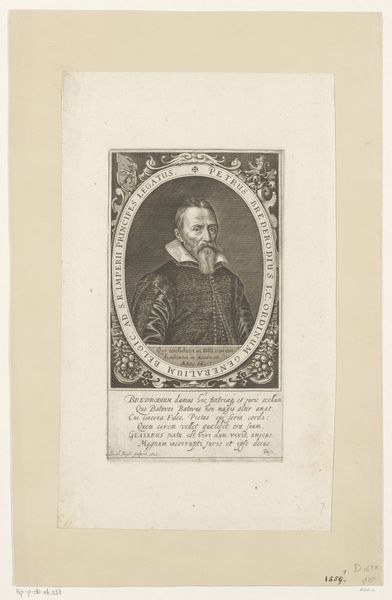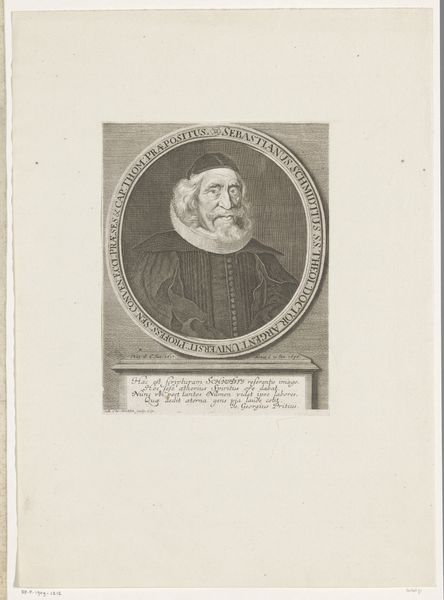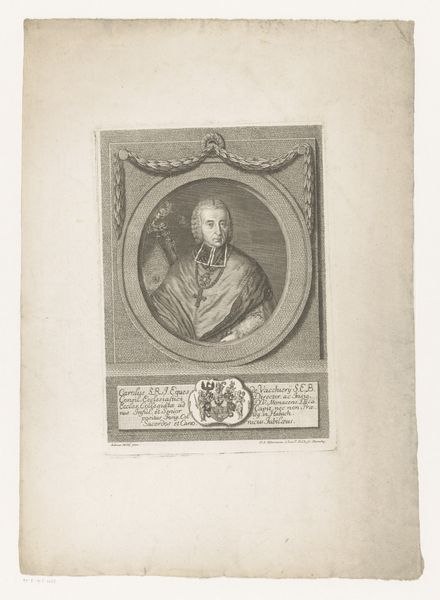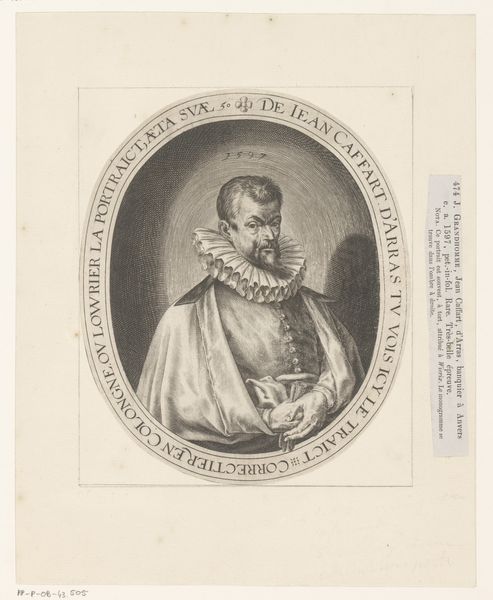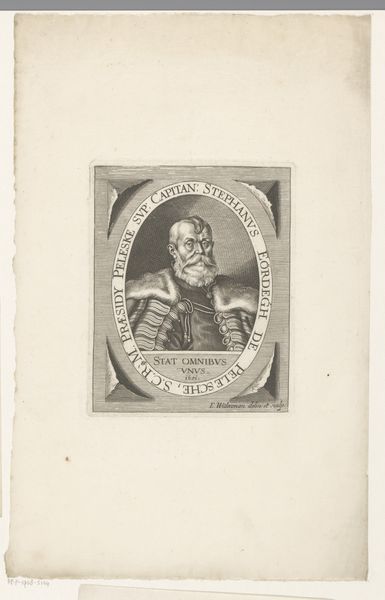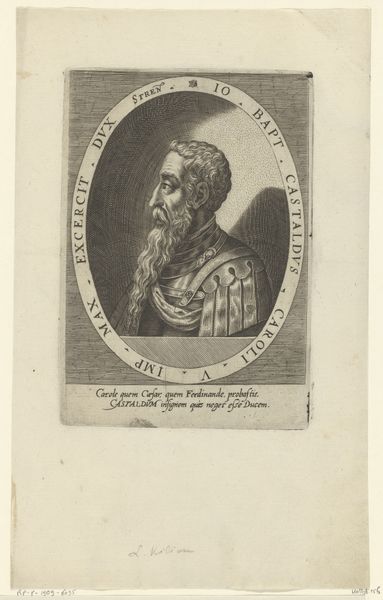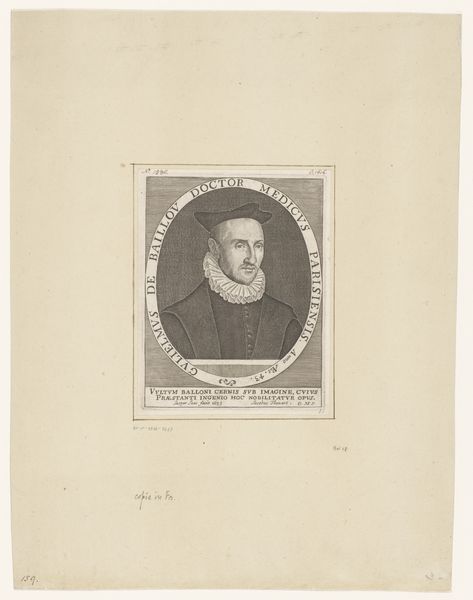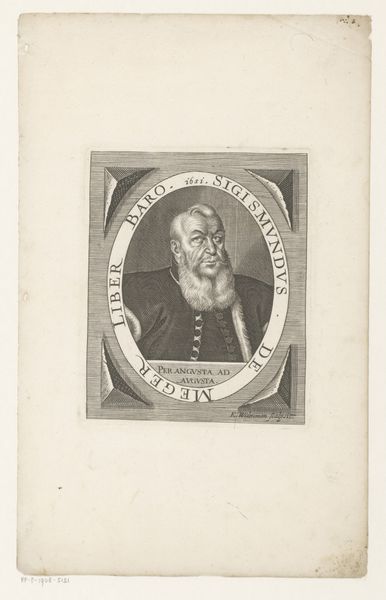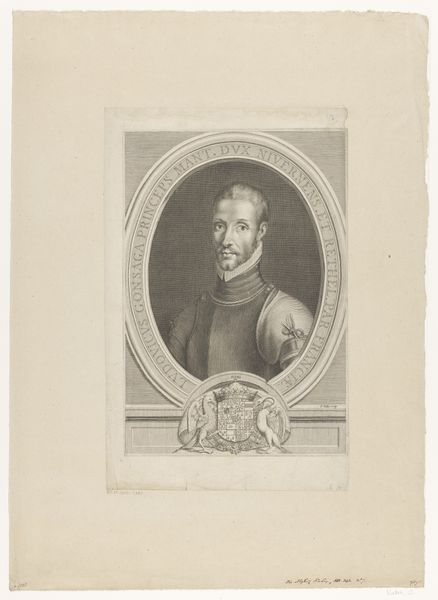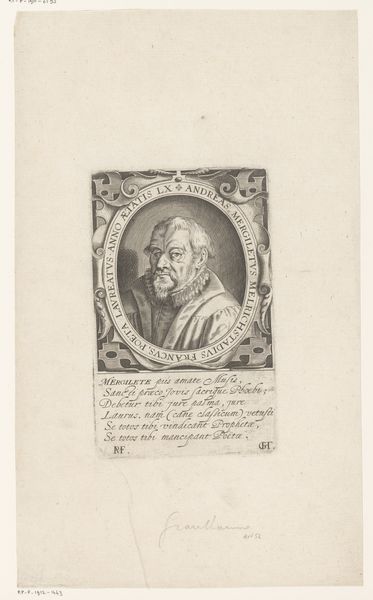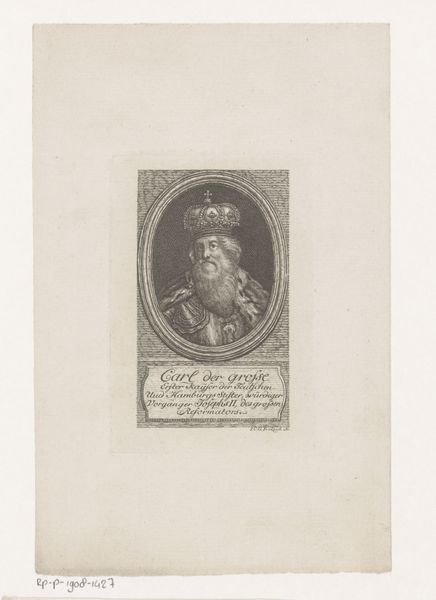
print, paper, engraving
#
aged paper
#
baroque
# print
#
paper
#
history-painting
#
engraving
Dimensions: height 149 mm, width 99 mm
Copyright: Rijks Museum: Open Domain
Curator: Here we have a portrait of Charles Emmanuel I, Duke of Savoy. This print, made by Thomas de Leu sometime between 1592 and 1614, captures a significant historical figure. Editor: The detail is striking, especially given its form. The sitter has a somewhat melancholic, contemplative presence. Curator: Consider the materials. The aging of the paper itself tells a story about the life of the print, how it was handled, stored. It is one in a presumed large number. Engravings like this were critical for disseminating images and ideals across Europe, essentially a form of early mass production. The act of reproducing imagery for the broader public changes our experience of its creation and its original subject. Editor: Precisely. Note how the artist uses symbolic imagery within the oval frame to highlight his power and status. The crisp lines, and formal pose immediately bring to mind concepts of nobility, military strength, perhaps even divine right of kings? Curator: Absolutely. The technical skill required to create these detailed lines through engraving also elevates the print beyond a mere practical object; it signifies cultural value of production, both literally through the expensive process and the cultural value embodied in the status and power. Who gets immortalized and by whom? The choice of subject is material and social, too. Editor: What resonates with me are those fine lines, seemingly fixed in their declaration. Yet as a work on paper, its message can become unstable, shift meaning over time and change to accommodate diverse cultural understandings of heroism and monarchy. Look at how his face is presented in stark and resolute terms. Curator: Interesting point. It brings to light this tension between intention and reception of a cultural symbol or icon. What strikes me most, though, is the labor involved in reproducing this image – the countless hours, the deliberate choices made, all contributing to the work’s inherent cultural value. We have a chain of material, reproduction and consumption of power in the print. Editor: Indeed. This exploration really illuminates how cultural artifacts possess not just historical and symbolic meaning, but reflect material means of creation and survival through changing periods of social history. Curator: Well, that just about wraps things up nicely, with considerations that offer varied avenues to better comprehend the print. Editor: It certainly showcases the many complex layers inherent in experiencing this historical portrait!
Comments
No comments
Be the first to comment and join the conversation on the ultimate creative platform.


